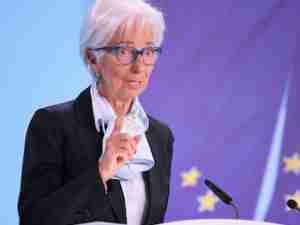At Xi Summit, Trump Needs a Plan to Deal With China
By: The Editors | Apr 04 2017 at 10:42 AM | International Trade
On the eve of their first-ever meeting this week, Chinese leader Xi Jinping has one great advantage over U.S. President Donald Trump: He knows what he wants. By contrast, U.S. policy toward China looks confused and contradictory. Until and unless this changes, not much progress will be made on critical issues in the most important bilateral relationship in the world.
China’s president craves stability as he manages a slowing economy and oversees a major leadership transition this fall. China needs the world trading system to remain open; it would prefer that countries stick to their ambitious targets for reducing carbon emissions. Above all, it would like the room to pursue its strategic goals at home, in the region and around the world.
In the Trump administration, various advisers appear to be fighting over how and to what extent the U.S. should pursue trade complaints Trump raised on the campaign trail. Trump has had to reverse himself on the question of Taiwan, even as Secretary of State Rex Tillerson quietly walked back tough statements about the South China Sea dispute. The decision to abandon the Trans-Pacific Partnership has gravely damaged U.S. credibility. Huge proposed cuts to the State Department would hamper its ability to engage in regional diplomacy.
To have any chance of altering Chinese behavior, Trump needs a stronger and more coherent message. That means, first, identifying and prioritizing a set of clear, reasonable demands—and then pushing them consistently across a broad front.
This has to start with North Korea. Rather than demand that China single-handedly rein in Kim Jong Un’s regime, the administration needs to make clear that Chinese unhelpfulness threatens cooperation on any other bilateral issue. It should then test China’s sincerity by demanding action on specific Chinese companies and banks involved in illicit trade with North Korea. The U.S. should be willing to discuss China’s own priorities, including restarting talks between Washington and Pyongyang, but demand to see progress on sanctions first.
On trade, the administration should be similarly focused. Rather than issuing empty threats about imposing 45 percent tariffs or declaring China a currency manipulator—for which there’s a shaky case at best—the U.S. should look for ways to limit Chinese access to the U.S. market on a case-by-case, sector-by-sector basis. Massive Chinese investment in strategic industries such as semiconductors may deserve extra scrutiny; buyouts of Hollywood studios don’t pose a similar threat. Accelerating negotiations on a bilateral investment treaty is in the interest of both sides.
Again, credibility depends on consistency—which is especially important to U.S. allies in the region. Whatever the flaws in former President Barack Obama’s “rebalance” strategy in Asia, it at least accelerated U.S. diplomatic engagement with Asian governments and citizens, visibly increased America’s military presence in the region, and affirmed the U.S.‘s commitment to trade. The Trump administration needs to work swiftly to rebuild and nurture these relationships, which have been eroded in just a few short months.
None of this will produce a quick breakthrough or grand bargain. At best, it will result in a series of incremental victories—and then only if China sees that the administration is unwavering in its demands. That’s surely more, however, than can be expected of the current approach.

